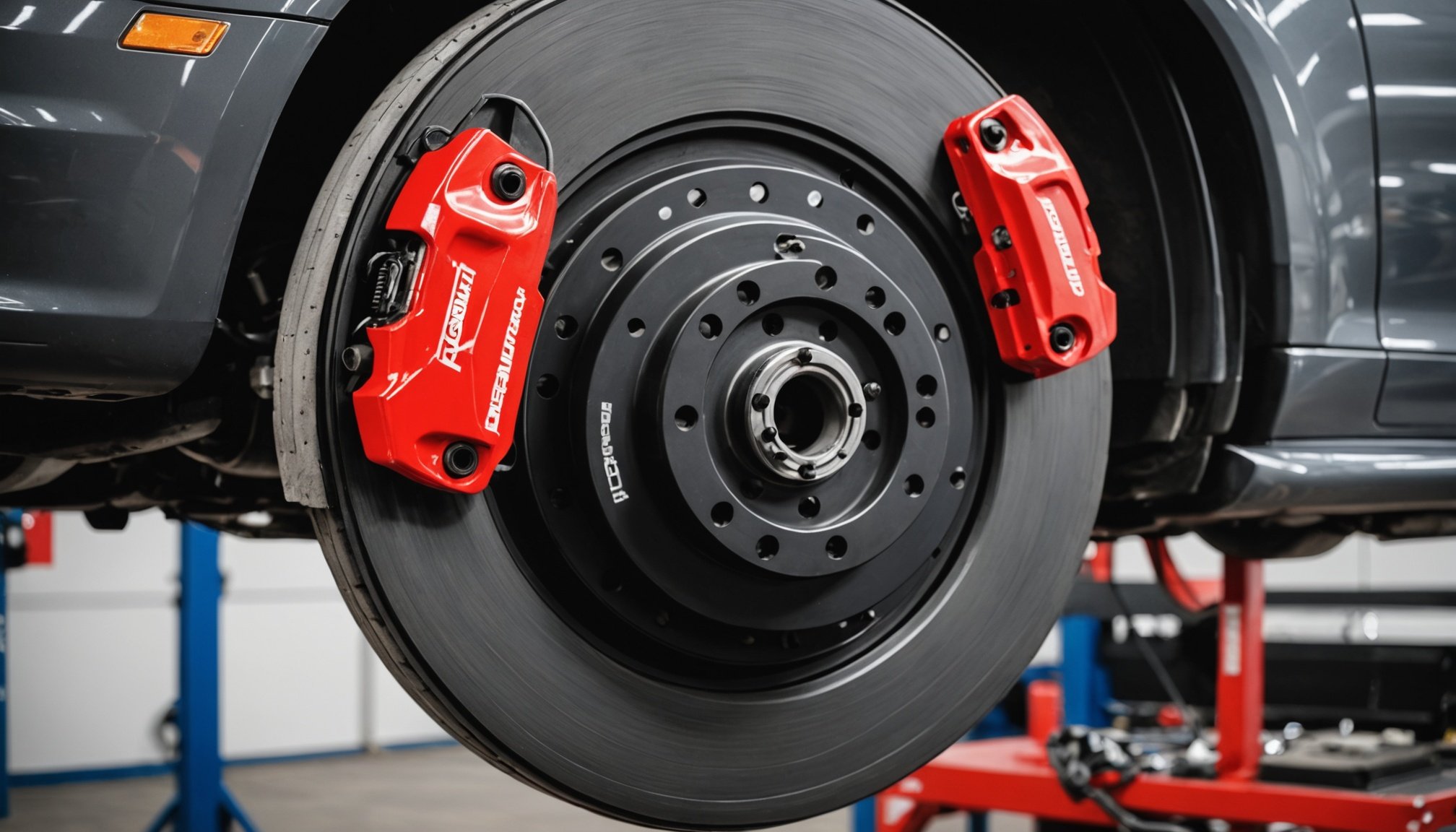Understanding Ceramic Brake Pads
Ceramic brake pads are becoming increasingly popular among car enthusiasts and drivers seeking improved braking performance. These pads are composed primarily of dense ceramic fibres, nonferrous filler materials, bonding agents, and small amounts of metal, such as copper. This unique composition offers a slew of advantages over traditional brake pad materials, such as semi-metallic and organic variants.
One major benefit of ceramic brake pads is their ability to produce less brake dust. The finely milled ceramic doesn’t disintegrate as quickly as other materials, resulting in cleaner wheels and reducing wear on both the rotor and the pad. Furthermore, ceramic pads generally offer quieter braking, creating fewer squeaks and vibrations than their counterparts.
In the same genre : Maximizing Engine Performance: Adjusting Coolant Mixtures for Frosty UK Weather
When it comes to performance braking, ceramic brake pads offer consistent stopping power, especially in varying temperatures and weather conditions. This reliability translates to smoother stops and enhanced safety in everyday driving. Additionally, ceramic pads have a longer lifespan, providing a cost-effective solution in the long term.
For drivers seeking both technical prowess and practical benefits, ceramic brake pads offer a compelling upgrade. Whether driving through city streets or challenging curving roads, these pads support the vehicle’s braking system with efficiency and precision.
Also to see : Exploring the Impact of Ambient Temperature on Tire Air Pressure and Vehicle Safety: What Every Driver Should Know
Mastering Braking Techniques
Developing effective braking skills is crucial for every driver. Understanding how to use braking techniques correctly enhances safety and vehicle control.
Key Techniques for Effective Braking
To achieve effective braking, focus on key techniques. Proper foot placement on the brake pedal is vital. The ball of your foot should press the centre of the pedal with your heel on the floor for stability. This fosters better control over braking techniques.
Does gradual or aggressive braking work better? Gradual braking should be your go-to for smooth stops. It’s considerate to passengers and enhances tyre grip. In contrast, aggressive braking is best reserved for emergencies when a sudden stop is required to avoid a collision.
Pairing traditional braking methods with engine braking is a smart move. Engine braking helps reduce speed using the vehicle’s gears, which decreases wear on brake pads.
Anticipating Traffic and Conditions
Successfully anticipating traffic involves constantly scanning the road for any potential hazards. Identifying dangers early enables you to adjust your braking technique effectively. Always adjust your braking techniques according to weather conditions. For instance, in wet or icy environments, start braking earlier than usual. Maintaining a safe distance from other vehicles allows ample time for effective braking if sudden stops become necessary.
Maintenance and Care for Ceramic Brake Pads
Caring for ceramic brake pads is vital to ensure brake pad longevity and optimal vehicle performance. Regular inspection of the brake system can prevent unforeseen issues and is a crucial part of brake maintenance. Always begin by inspecting your brake pads for any signs of damage or excessive wear. Visible wear indicators, like deep grooves or thinning, signal a need for replacement to maintain their efficiency.
Consistent cleaning of the ceramic brake pads is another vital component. Use a gentle brake cleaner spray and a soft brush to clear any dust or debris. This practice prevents build-up, which could potentially affect the braking performance. Avoid harsh chemicals that might degrade the pad material.
Be alert to common signs of wear, such as squealing sounds or reduced braking power, which indicate immediate attention is needed. Regular brake inspections play a pivotal role in extending the lifespan of your brake pads. By maintaining these routines, not only is safety assured, but durability is also enhanced, signifying the importance of comprehensive vehicle care. Adopting these practices ensures ceramic brake pads sustain their functionality and efficiency over time.
Comparing Ceramic Brake Pads with Other Options
When deciding on the most suitable brake pads, understanding the brake pad comparison is crucial. This involves differentiating between ceramic, organic, and semi-metallic pads. Each type offers unique advantages and disadvantages across various driving conditions.
Overview of Different Types of Brake Pads
- Organic Pads: Often made from materials like glass and rubber, organic pads are quieter but wear out faster.
- Semi-Metallic Pads: Known for their durability and excellent heat dissipation, these pads provide strong brake performance but can be noisy.
- Ceramic Pads: Favoured for their low noise levels and minimal dust production, ceramics offer consistent performance at higher costs.
Performance Analysis
Examining performance discussion reveals ceramic pads excel in fade resistance and provide smooth stopping distances. Compared to organic options, ceramic pads produce less dust and noise. However, while semi-metallic pads are cost-effective with a longer lifespan, they may compromise on serenity and cleanliness in everyday driving.
Choosing the Right Brake Pads for Your Vehicle
Selecting appropriate brakes depends on driving style and vehicle type. Daily commuters might prefer quieter organic pads, whereas sports car drivers benefit from the heat-tolerant semi-metallic or ceramic pads. Consulting a professional ensures optimal choices for safety and performance.
Safety Considerations While Driving
Understanding vehicle dynamics and braking distances is crucial for driving safety. Many accidents occur because drivers misjudge how their car will respond, particularly in urgent braking situations. Adequately assessing your vehicle’s behaviour during braking can be a pivotal factor in accident prevention.
One effective way to improve braking safety is by upgrading your brakes. High-quality brakes diminish stopping distances, ensuring your vehicle stops in less space and in less time. Enhanced brakes also provide better control, reducing the risk of skidding or losing control, especially on wet or uneven surfaces.
Moreover, real-life examples underline the importance of proper braking techniques. There are countless instances where an understanding of vehicle dynamics and optimal brake application has effectively prevented accidents. For instance, a driver aware of their car’s stopping distance can anticipate road hazards and react appropriately, such as slowing down preemptively when approaching curves or intersections.
In summary, prioritising driving safety by recognising how your vehicle behaves, maintaining braking safety, and learning to execute appropriate braking techniques can significantly mitigate accident risks. Consider these factors to enhance your safety and ensure a smoother, more secure driving experience.










